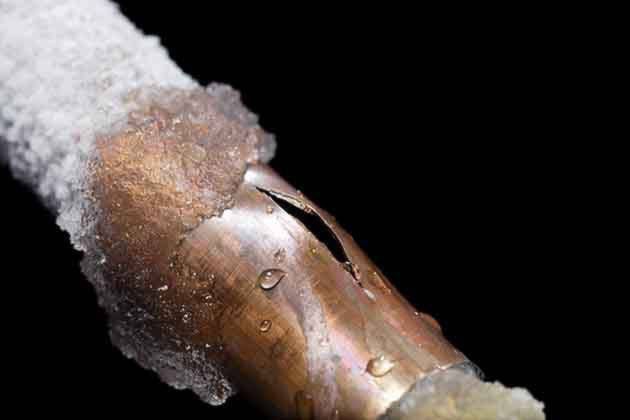The City of Kimberley is cautioning that conditions right now, which include recent cold weather, less snow cover than normal, and warming temperatures, are leading to utility pipes freezing at number of locations throughout the city.
Mayor Don McCormick says the city was inundated with calls all last week.
READ MORE: Keep those taps running
According to information from the City, pipes that freeze most frequently are those that are exposed to severe cold, like outdoor hose bibs, swimming pool supply lines, water sprinkler lines, and water supply pipes in unheated interior areas like basements and crawl spaces, attics, garages, or kitchen cabinets. Pipes that run against exterior walls that have little or no insulation are also subject to freezing.
If the water service line to your home has ever frozen or you have noticed a reduced water flow in your home during the winter, leave one tap running cold water day and night (stream should be the size of a pencil). This will help to prevent your lines from freezing. Since frost sinks deeper into the ground when air temperatures rise after a period of extreme cold, you will need to keep the water running 24/7 until mid-April to avoid having the line freeze.
The City encourages residents who have experienced frozen water service lines in the past to be pro-active by ensuring indoor lines are properly insulated, keeping a good snow cover over the ground above the service lines and installing a bleeder line system.
Your sewer line is also at risk of freezing. If you notice the water in your sink or bathtub draining slower than usual, please run hot water down your drain to see if drain flow improves. If it does, continue to run hot water down your drain several time a day until the weather changes and the cold snap has passed. If hot water does not improve the flow, contact a plumber.
Tips to prevent frozen pipes.
Before the onset of cold weather, prevent freezing of these water supply lines and pipes by following these recommendations:
Check around the home for other areas where water supply lines are located in unheated areas. Look in the basement, crawl space, attic, garage, and under kitchen and bathroom cabinets. Both hot and cold water pipes in these areas should be insulated.
Consider installing specific products made to insulate water pipes like a “pipe sleeve” or installing UL-listed “heat tape,” “heat cable,” or similar materials on exposed water pipes.
Drain water from swimming pool and water sprinkler supply lines following manufacturer’s or installer’s directions. Do not put antifreeze in these lines unless directed. Antifreeze is environmentally harmful, and is dangerous to humans, pets, wildlife, and landscaping.
Remove, drain, and store hoses used outdoors. Close inside valves supplying outdoor hose bibs. Open the outside hose bibs to allow water to drain. Keep the outside valve open so that any water remaining in the pipe can expand without causing the pipe to break
During Cold Weather, Take Preventative Action
Keep garage doors closed if there are water supply lines in the garage.
Open kitchen and bathroom cabinet doors to allow warmer air to circulate around the plumbing. Be sure to move any harmful cleaners and household chemicals up out of the reach of children.
When the weather is very cold outside, let the cold water drip from the faucet served by exposed pipes. Running water through the pipe - even at a trickle - helps prevent pipes from freezing.
Keep the thermostat set to the same temperature both during the day and at night. By temporarily suspending the use of lower nighttime temperatures, you may incur a higher heating bill, but you can prevent a much more costly repair job if pipes freeze and burst. If you will be going away during cold weather, leave the heat on in your home, set to a temperature no lower than 55° F / 13° C.
To Thaw Frozen Pipes
If you turn on a faucet and only a trickle comes out, suspect a frozen pipe. Likely places for frozen pipes include against exterior walls or where your water service enters your home through the foundation.
1. Keep the faucet open. As you treat the frozen pipe and the frozen area begins to melt, water will begin to flow through the frozen area. Running cold water through the pipe will help melt ice in the pipe.
2. Apply heat to the section of pipe using an electric heating pad wrapped around the pipe, an electric hair dryer, a portable space heater (kept away from flammable materials), or by wrapping pipes with towels soaked in hot water. Do not use a blowtorch, kerosene or propane heater, charcoal stove, or other open flame device.
3. Apply heat until full water pressure is restored. If you are unable to locate the frozen area, if the frozen area is not accessible, or if you cannot thaw the pipe, call a licensed plumber.
4. Check all other faucets in your home to find out if you have additional frozen pipes. If one pipe freezes, others may freeze, too.
carolyn.grant@kimberleybulletin.com
Like us on Facebook and follow us on Twitter
